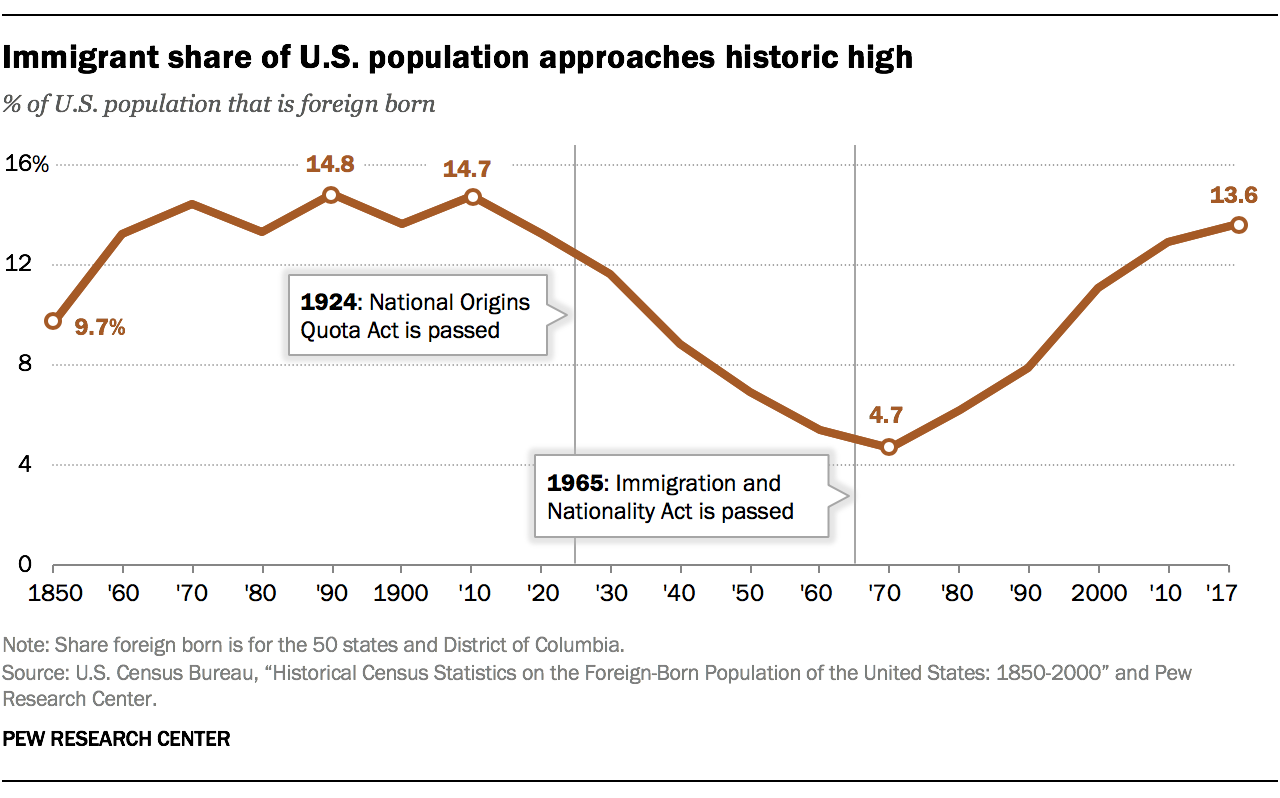Quite a lot happened in those 4 years:
US entry into WWI - a national campaign for 100% Americanism and pressure to not act like a "hyphenated" American if that connected you with the enemy (for German-Americans) or made you unenthusiastic for working with our allies (for Irish-Americans). The war effort, mobilization, conscription, and tighter blockade also further limits immigration during the 20 + months the US is at war.
Accelerates methods to substitute for decreased immigration from Europe [African-American migration, southern white migration, Puerto Rican migration]
The Bolshevik revolution and other chaotic political agitations in Europe - creating an association between Eastern European immigrants and leftist radicalism. And those immigrant groups and ethnic strife, as new nation states get set up and struggle over their borders.
Post-war - with the restoration of international shipping lanes, immigration lanes quickly rise again back up to pre-war peaks by 1921, alarming Americans after the wartime pause.
Plus, the years 1914-1917 had probably also seen an immigration slowdown because war and conscription in Europe probably increased ticket prices reduced European employment, and cut down on opportunities for young men to migrate in those years, so the normal baseline Americans were accustomed to had fallen in those years and substitution from the south was probably occurring in those years too.
Without a WWI at all, the setting to a lower baseline, and normalization of substitution methods, while not necessarily avoidable, could slow down quite a bit.
What I find interesting is that support for a literacy test remained constant between 1913 and 1915 (almost two-thirds of both houses of the US Congress) even though WWI broke out since then and then increased by a bit by 1917, thus making its passage possible over President Wilson's veto.
I also found it interesting that at least one prominent US person in 1917 predicted that the literacy test would be just the beginning of US immigration restrictionism rather than its end:
This seems like your best bet here. The challenge, of course, is how to delay this by more than one or two decades at the very most. Even in 1917, the US Congress passed a literacy test over Woodrow Wilson's veto, and it was already foreseeable even back then that there would be more where that came from:
Accept Terms and Conditions on JSTOR
JSTOR is a digital library of academic journals, books, and primary sources.www.jstor.org
This prediction itself appears to have been made in 1917, shortly after the literacy test was passed by the US Congress over President Wilson's veto.




